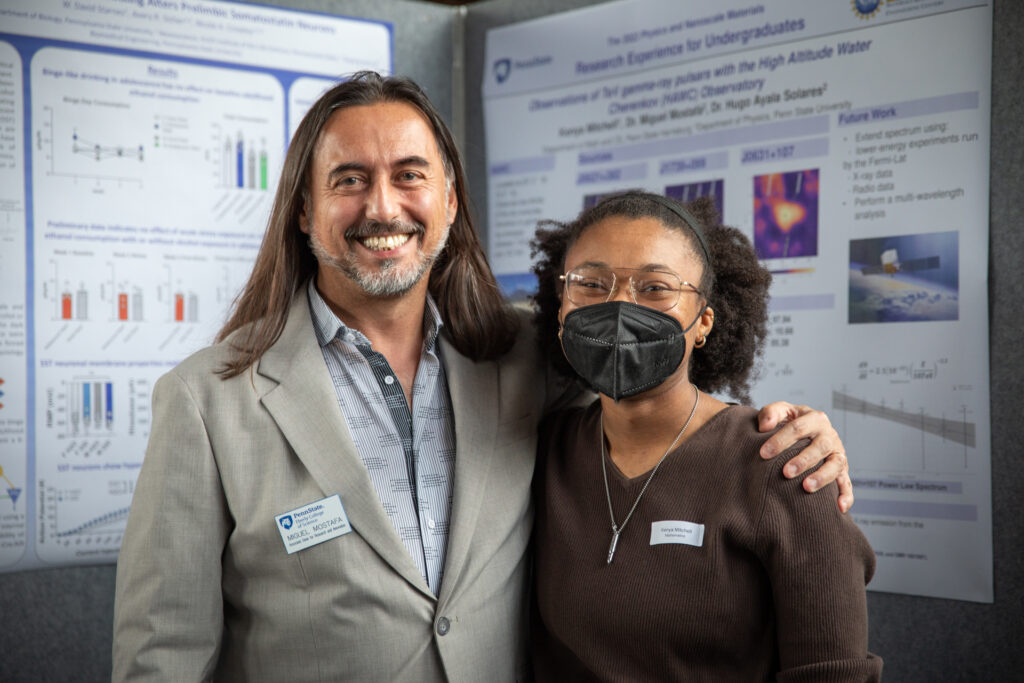Experimental studies of very-high energy gamma rays with the High Altitude Water Cherenkov Observatory
Gamma rays are the highest energy form of electromagnetic radiation. Observations of astrophysical gamma rays serve as probes of physical conditions and processes in the most extreme environments throughout the Universe and can be used to test fundamental physics.
The High Altitude Water Cherenkov (HAWC) observatory, located on the slopes of the Sierra Negra in Mexico, is a ground-based facility designed with unique capabilities to observe very high-energy gamma rays. Our group at Temple University supports the HAWC operations, engages in software development and analysis efforts to extend HAWC’s capabilities at the highest and lowest end of the energy range covered by the observatory. We utilized those improvements for scientific analyses of the data.

Two very distinctive features of the HAWC Observatory are the continuous observations and the large field of view. These make HAWC particularly important for the detection of very high energy gamma rays from extended regions and for continuously survey over 2/3 of the sky. As an example of these capabilities, we reported the first detection of gamma rays from the Sun at the unprecedented energies of more than 1 TeV — roughly a trillion times as energetic as ordinary visible light — challenging our understanding of the most extensively studied star in astrophysics. Scientists did not expect the Sun to glow this brightly at these energies, based on our knowledge of how charged particles from outer space (cosmic rays) interact with it. The observed signal shows an intriguing dependence on the mysterious 11-year solar cycle, i.e. it is brightest during the solar minimum when the Sun’s magnetic activity is low, and weakest during the solar maximum when the Sun’s magnetic field is at its most violent. This points towards a link between cosmic rays impinging on the solar surface and the observed gamma rays. But exactly how these cosmic rays interact to produce such a bright flux of gamma rays is a puzzle. Resolving this puzzle would fundamentally change what we know about sun-like stars at the highest energies accessible to our experiments. From a purely measurement point-of-view, this is a game-changing observation, because until now we could only look at the Sun at lower energies with detectors on satellites in orbit. The HAWC observatory, the first ground-based TeV telescope to detect these gamma rays, has therefore pioneered a new chapter in high energy astrophysics of the Sun.

We also reported new observations of a known Galactic object, which is one of the highest-energy gamma-ray sources ever detected. This extremely bright source is an intriguing source to study because the origins of the emission were previously unclear. The HAWC observations provide evidence that this source could be a “PeVatron,” which is a cosmic particle accelerator that can accelerate cosmic rays up to (and beyond) the PeV energy range. This result highlights the importance of multi-wavelength and multi-messenger studies in determining the emission mechanisms of the most powerful accelerators in our Galaxy.
For the most recent results from the HAWC Observatory visit: https://www.hawc-observatory.org/news/
